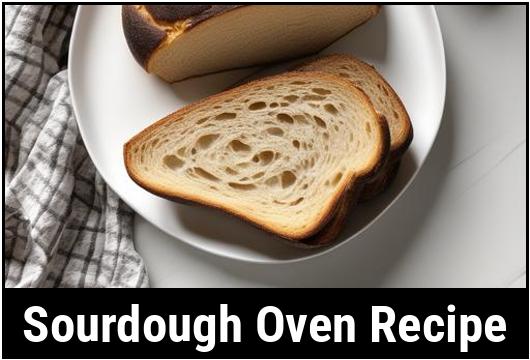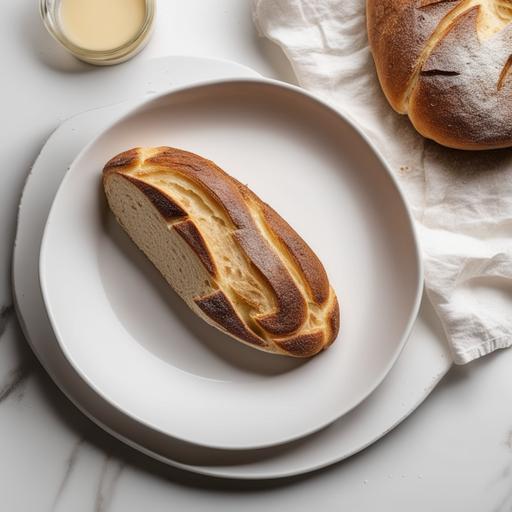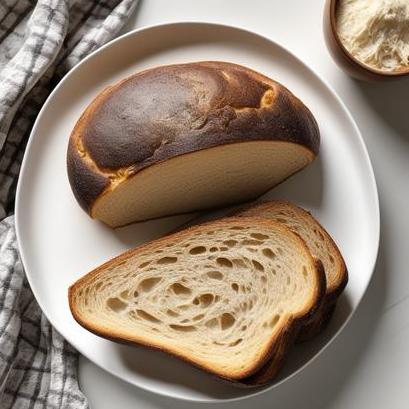
Sourdough Oven Recipe: Everything You Need To Know
If you’re a sourdough bread lover, you know that nothing beats the taste and texture of fresh homemade sourdough. And there’s no better way to achieve the perfect loaf than by baking it yourself using a sourdough oven recipe.
In this article, we’ll cover everything you need to know about making a delicious sourdough bread, from the science of sourdough fermentation to tips and tricks for perfecting your recipe. So let’s get started!
The Science Behind Sourdough Fermentation
Before we dive into the recipe, it’s important to understand the science of sourdough fermentation. Sourdough bread is leavened by a natural fermentation process that involves wild yeasts and lactic acid bacteria. This fermentation process is what gives sourdough bread its distinct flavor, texture, and long shelf life.
The wild yeasts and bacteria that are responsible for sourdough fermentation are present in the air, water, and flour. When flour and water are mixed together and allowed to sit at room temperature, the naturally occurring yeast and bacteria begin to feed on the carbohydrates in the flour, producing carbon dioxide gas and lactic acid.
Over time, this fermentation process creates a tangy, sour flavor in the dough. The longer the dough ferments, the more pronounced the sour flavor will be. This is why sourdough bread recipes often call for long fermentation times, ranging from several hours to several days.
Choosing Your Ingredients
The key ingredients in any sourdough bread recipe are flour, water, and a sourdough starter. When choosing your ingredients, it’s important to select high-quality, fresh ingredients that will produce the best possible results.
Flour
The type of flour you use in your sourdough bread recipe will have a significant impact on the flavor and texture of your bread. Most sourdough recipes use bread flour or all-purpose flour, which have a higher protein content than other types of flour. The protein in the flour helps to create a strong gluten network, which is essential for creating a chewy, dense texture in sourdough bread.
It’s important to use fresh flour that hasn’t been sitting on your shelf for too long. Stale flour can have a negative impact on the fermentation process, resulting in a less flavorful and less textured loaf.
Water
The water you use in your sourdough bread recipe should be filtered or bottled water, as tap water can contain chemicals that may interfere with the fermentation process. The water should be at room temperature, around 70-75 degrees Fahrenheit, to help activate the natural yeasts in the flour.
Sourdough Starter
A sourdough starter is a mixture of flour and water that has been fermented for several days or even weeks. The starter contains a healthy population of wild yeasts and bacteria that are necessary for leavening the bread.
When making your own sourdough starter, it’s important to use the right proportions of flour and water and to keep the starter fed with fresh flour and water regularly. A healthy starter should smell sour and yeasty and should have a bubbly, foamy texture.
Preparing Your Dough

Now that you’ve selected your ingredients, it’s time to prepare your dough. Follow these steps to create the perfect sourdough loaf:
Step 1: Mix Your Ingredients
In a large mixing bowl, combine the flour, water, and sourdough starter. Mix everything together until it forms a sticky, shaggy dough. Let the dough sit for 30 minutes to 1 hour to allow the gluten to develop.
Step 2: Knead Your Dough
Once the dough has rested, turn it out onto a lightly floured surface and knead it for 10-15 minutes. Kneading helps to develop the gluten and create a tight, elastic texture in the dough.
Step 3: Ferment Your Dough
After kneading, return the dough to the mixing bowl and cover it with a clean cloth or plastic wrap. Let the dough rest at room temperature for 6-12 hours to allow it to ferment.
Step 4: Shape Your Dough
Once the dough has fermented, turn it out onto a lightly floured surface and shape it into a loaf. Place the loaf into a greased or lined loaf pan or onto a baking sheet.
Step 5: Second Fermentation
Cover the shaped dough with a clean cloth or plastic wrap and let it rest at room temperature for another 3-4 hours for the second fermentation. This allows the dough to rise and develop a light, airy texture.
Step 6: Preheat Your Oven
Preheat your oven to 450 degrees Fahrenheit. Place a baking dish filled with water on the bottom rack of your oven to create steam.
Step 7: Score Your Dough
Using a sharp knife or a razor blade, score the top of your dough in a cross pattern or any pattern of your choice. Scoring allows the bread to expand evenly and release steam during baking.
Step 8: Bake Your Dough
Place your loaf into the preheated oven and bake for 30-40 minutes, or until the bread is golden brown and sounds hollow when tapped on the bottom.
Step 9: Cool Your Bread
Allow your bread to cool on a wire rack for at least 1 hour before slicing and serving.
Tips and Variations

To make the most out of your sourdough oven recipe, try these tips and variations:
-
Experiment with different types of flour and grain combinations to create unique flavors and textures.
-
Use a baking stone to achieve a crispy, crunchy crust.
-
Add ingredients like herbs, cheese, or nuts to your dough for added flavor and texture.
-
Use a Dutch oven to create a more compact, evenly baked loaf.
Overcooking and Undercooking

Overcooking or undercooking your sourdough bread can have a serious impact on the taste and texture of your loaf. Overcooked bread may be tough and dry, while undercooked bread may be gummy and doughy.
To avoid overcooking or undercooking, keep an eye on your bread as it bakes and use a thermometer to check the internal temperature. Your bread is done when the internal temperature reaches 200-210 degrees Fahrenheit.
Conclusion
Making a perfect sourdough oven recipe takes time and practice, but the end result is worth it. With high-quality ingredients, proper fermentation techniques, and careful attention to baking times and temperatures, you can create a delicious, artisanal sourdough bread that will impress everyone who tries it. So grab your flour and starter and get baking!
Sources
FAQS On Sourdough Oven Recipe
What Is A Sourdough Oven Recipe?
A sourdough oven recipe is a method of preparing bread using a sourdough starter and baking it in an oven. This recipe typically yields a bread with a distinct tangy flavor, a chewy texture, and a crusty exterior.
How Do I Create A Sourdough Oven Recipe?
To create a sourdough oven recipe, you will first need to have an active sourdough starter. This starter consists of flour and water that have been allowed to ferment and develop wild yeast and bacteria. Once you have a lively starter, you can mix it with flour, water, and salt to create a dough. The dough is then left to rise, typically for several hours or overnight, before it is shaped and placed in a preheated oven for baking.
What Are The Benefits Of Using A Sourdough Oven Recipe?
There are several benefits to using a sourdough oven recipe. Firstly, the fermentation process in sourdough bread helps to break down gluten, making it easier to digest for some individuals with gluten sensitivities. Additionally, the natural yeasts and bacteria in a sourdough starter enhance the nutritional value of the bread by increasing the bioavailability of certain nutrients. Sourdough bread also has a lower glycemic index compared to bread made with commercial yeast, meaning it has a more gradual impact on blood sugar levels.
How Long Does It Take To Make A Sourdough Oven Recipe?
The time required to make a sourdough oven recipe can vary depending on several factors, such as the temperature of your kitchen, the activity of your sourdough starter, and the desired flavor and texture of the bread. Typically, the entire process, including fermentation and baking, can take anywhere from 12 to 24 hours. However, some recipes may require longer fermentation times or additional proofing periods to achieve the desired results.
Can I Make Adjustments To A Sourdough Oven Recipe?
Yes, you can make adjustments to a sourdough oven recipe to suit your preferences or dietary requirements. For example, you can experiment with different types of flour, such as whole wheat or rye, to alter the flavor and texture of the bread. You can also add various ingredients like seeds, nuts, or dried fruits to enhance the taste and nutritional profile. Additionally, you can adjust the fermentation and proofing times to control the sourness and final texture of the bread. However, it’s important to note that making significant changes to a sourdough oven recipe may require some trial and error to achieve the desired results.



